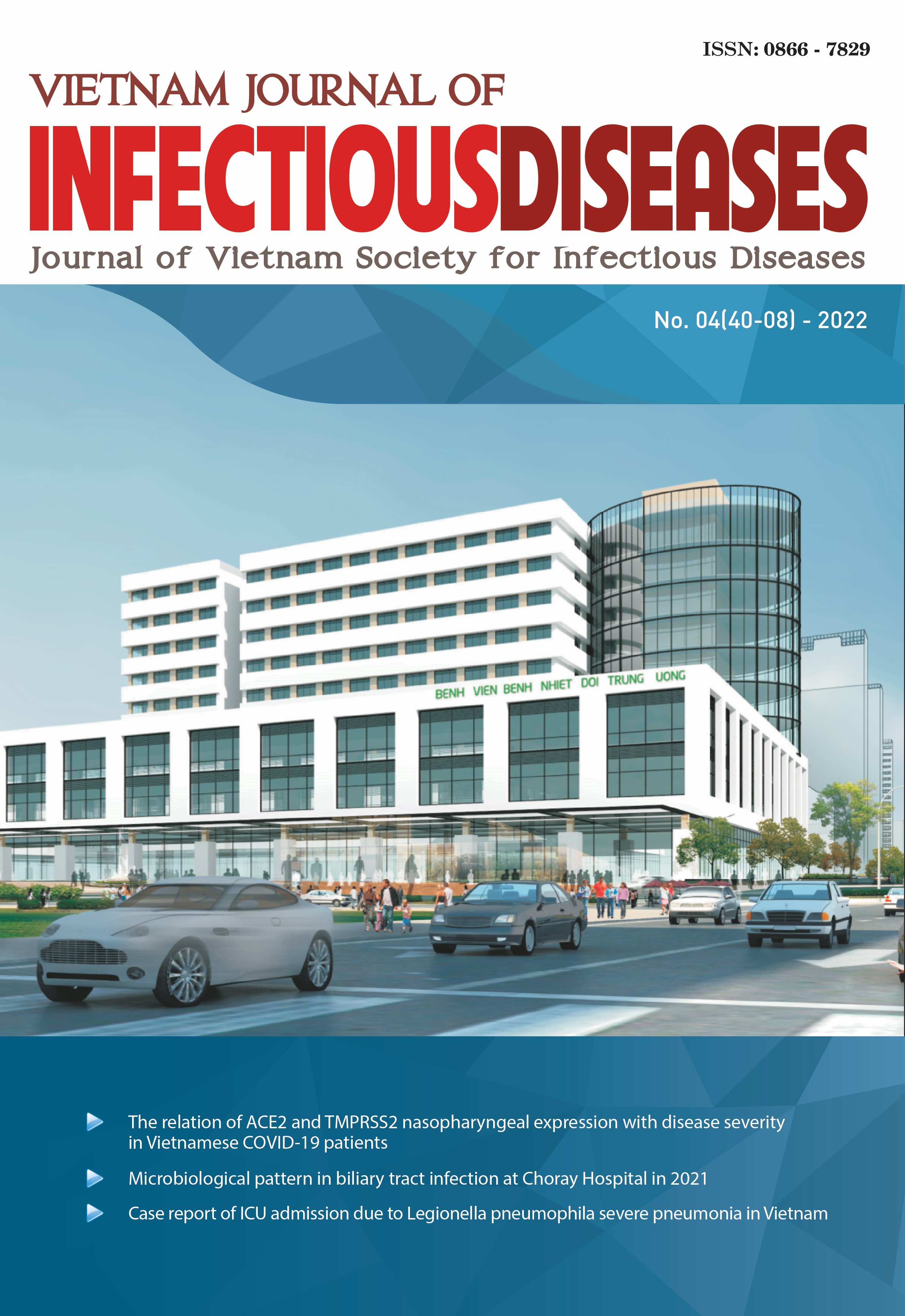CASE REPORT OF HEMOPHAGOCYTIC LYMPHOHISTIOCYTOSIS AFTER INFLUENZA A INFECTION (H1N1) TREATED AT THE NATIONAL HOSPITAL FOR TROPICAL DISEASES
Nội dung chính của bài viết
Tóm tắt
Background: Influenza A (H1N1) usually causes mild clinical symptoms and can be self-limiting, in some cases, it may develop abnormally and cause hemophagocytic lymphohistiocytoic (HLH) is a serious, life-threatening medical condition.
Subjects and methods: Description of clinical, subclinical symptoms and results of treatment in a 13-year-old boy with hemophagocytic lymphohistiocytoic after influenza A(H1N1) infection, treated at the National Hospital for Tropical Diseases.
Results: BA 13-year-old boy had onset of symptoms with cough, fever, yellow skin and eyes, anemia, hepatosplenomegaly, no difficulty breathing, no rales in the lungs. PCR test for influenza A(H1N1) was positive, red blood cells decreased (2.8 2T/L), white blood cells decreased (2.6 T/L), platelets decreased (37 G/L), ferritin increased (950 ng/mL), myelogram showed blood phagocytosis. The patient was diagnosed with HLH - influenza A(H1N1) infection according to HLH - 2004 criteria, chemotherapy treatment
according to HLH - 2004 regimen, anti-influenza virus and transfusion of red blood cells and fresh plasma. Treatment results, children responded well to treatment, gradually stabilized in clinical and subclinical conditions, and the children were discharged from the hospital.
Conclusion: Attention should be paid to secondary HLH in patients with an unusual course of infection.
Chi tiết bài viết
Từ khóa
Hemophagocytic lymphohistiocytoic, secondary, Influenza A(H1N1)


